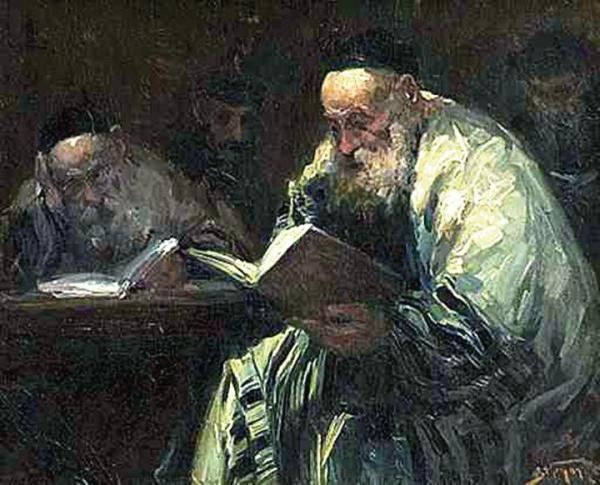 | ||
Similar Ta'anit, Tosefta, Pesachim, Bava Batra | ||
Ebel Rabbati (Hebrew: אבל רבתי) is one of the later or minor tractates which in the editions of the Babylonian Talmud are placed after the fourth order, Neziḳin; it treats of mourning for the dead. It is known also under the euphemistic name Semachot (שמחות), meaning "festive occasions" or "joys".
Contents
Contents of the "Small" Ebel
To judge from these fragments the small Ebel contained regulations concerning visitation of the sick, treatment of the dying, laying out of the corpse, mourning for the dead, arrangement of graves, and collection of the bones ("ossilegium"), which was customary among the Jews as well as among the Greeks. This treatise, which is the oldest collection of halakot on mourning customs, was compiled in Palestine; and, according to Brüll (l.c.), R. Eleazar b. Zadok, who lived in Lydda at the time of Gamaliel II, prepared the nucleus of it. It was then amplified, enriched, and revised by R. Ḥiyya, but as it was known to a small circle only, it was replaced by the later treatise Ebel Rabbati, which borrowed much from it.
Late date
The treatise Semaḥot is a post-Talmudic product and originated in Palestine. This explains the many coincidences of its contents with the baraitot of the Jerusalem Talmud. It is a compilation from various older works; and in many passages traces of revision are to be noticed. The compiler incorporated a considerable part of the small Ebel, as well as much from other works, besides adding original matter. The late date of the compilation of the treatise may be seen from the use of the two Talmudim and from the character of the composition itself, which is unmistakable.
The work reached Babylonia in the geonic period; and even at that time it received amplifications and additions from both Talmudim. It took on its present form probably in the middle of the 8th century (Brüll, l.c. p. 48), if not later. The work was comparatively widely circulated at the time of the later geonim, since reference to a passage in it is made in a question addressed to Sherira and Hai Gaon from a distant region. In their responsum to this question they call the treatise "Mishnatenu" = "our Mishnah" (Naḥmanides, Torat ha-Adam, p. 51a, Venice, 1598). Rashi had the work in its present form, since he explicitly cites as the commencement of the treatise the opening words of the present text.
Organization
The treatise is divided into 14 chapters, and this division dates from the 13th century at the latest, since even Mordecai ben Hillel cites it by chapters (Mordekai on M. Ḳ. 919, 926, 929). The tractate contains almost complete instructions as to the treatment of the dying and the dead, from the commencement of the death-agony to the arrangement of the grave which receives the remains. Numerous examples from current practice are cited. A large number of haggadot also are included. On the whole, it furnishes much valuable material for the study of Oriental antiquities in general and of ancient Jewish practices in particular, for the verification of historical facts, and for an understanding of the development of Jewish customs.
The present text is defaced by many corruptions, so that its original form cannot now be determined. Wherever possible the commentators have made corrections on the basis of critical comparison, or have called attention to the corruptions.
Outline
The following is a short outline of the contents of the treatise:
